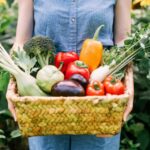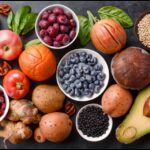Fruits and vegetables, often considered the cornerstones of a balanced diet, are loaded with essential nutrients vital for your well-being. Yet, they’re conspicuously missing in many daily meals. Let’s rediscover their importance and explore practical ways to make them a regular feature on your plate!
Why Eat More Fruits and Vegetables?
The emphasis on eating more fruits and veggies isn’t just a fanciful dietary trend. It’s grounded in their proven ability to reduce the risk of chronic diseases, thanks to their high content of vitamins, minerals, antioxidants, and dietary fiber. They not only nourish your body but also become your first line of defense against various health issues.
The Bounty of Choice
Whether you prefer the sweet, tangy indulgence of fruits like apples, berries, and citrus fruits, or the earthy goodness of vegetables such as kale, carrots, and broccoli, the variety is endless. Each brings a unique combination of nutrients and antioxidants to the table, contributing to overall health in different, vital ways.
The Nutrient Powerhouses
Fruits and veggies are more than just a colorful addition to your plate; they’re nutrient powerhouses. For instance, leafy greens are rich in vitamins A, C, K, and folate, while fruits like berries are packed with antioxidants that fight inflammation. Understanding the nutritional content in each helps you make informed choices for a balanced diet.
Overcoming the Resistance
Despite the known benefits, many shy away from these nutritious foods, often due to preconceived taste preferences or inconvenience in preparation. Overcoming this resistance is key to transforming your health prospects.
Practical Tips to Incorporate More Fruits and Veggies in Your Diet
Knowing their importance is one thing, but practically including fruits and vegetables in your daily diet is another. It’s easier than you think!
Snack Smart
Replace your usual snacks with the natural sweetness or the satisfying crunch of fruits and veggies. Options like celery with peanut butter or baby carrots with hummus are not only tasty but also nutritious.
Soup It Up!
Not a fan of raw veggies? No problem! Soups are a fantastic way to combine various vegetables in a flavorful concoction, making them more palatable and enjoyable.
Visible Means Reachable
Out of sight often means out of mind. Keep fruits in plain sight, like on your kitchen counter, and you’re more likely to grab one when hunger strikes.
On-the-Go Nutrition
Don’t leave home unprepared! Carry portable fruits or veggies, like apples or baby carrots, to avoid the temptation of unhealthy fast food when hunger hits on the road.
The Frozen Delights
Frozen fruits offer an excellent way to preserve their nutritional goodness while providing a refreshing treat. Use them as a healthy alternative to high-calorie desserts.
Integrating more fruits and vegetables into your daily regimen doesn’t have to be a chore. It’s about making simple, smart choices that increase your intake and, consequently, enhance your health. So, snack smart, prepare creatively, and make these natural powerhouses a convenient choice!
FAQs
Can I eat too many fruits and vegetables?
While fruits and vegetables are healthy, it’s essential to maintain balance. Too much can lead to digestive issues, especially for high-fiber varieties.
Do frozen fruits and veggies hold the same nutritional value as fresh?
Yes, generally, they’re comparable because freezing preserves many nutrients.
How can I make vegetables more flavorful?
Experiment with herbs, spices, and healthy sauces to enhance their natural flavors.
What if I’m always on the go?
Opt for portable, low-maintenance options like bananas, apples, or pre-cut veggies.
Are fruit juices a good substitute for whole fruits?
Whole fruits are preferable due to their fiber content and lower sugar concentration compared to juices.







